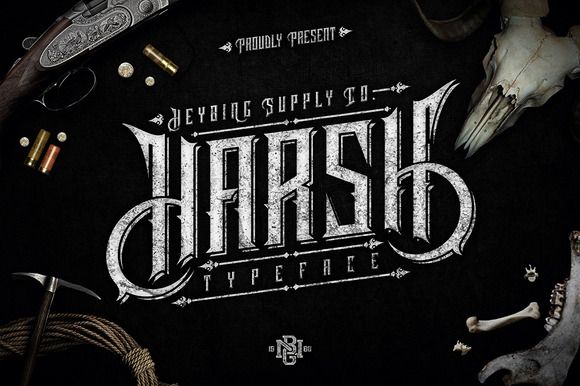When we think about website design, typography may not be the first thing that comes to mind. However, typography plays a crucial role in creating a website’s overall look and feel. In this article, we’ll explore the impact of typography on website design and provide practical tips for improving your website’s typography.
1. Introduction
Typography is the art and technique of arranging type to make written language legible, readable, and appealing when displayed. In website design, typography is the way text is presented on a website, including the font, size, color, and spacing.
2. What is Typography?
Typography is not just about selecting a font and using it on a website. It involves careful consideration of how text is presented to ensure that it is easy to read and visually appealing. Good typography can make text more engaging and help users to better understand the content.
3. The Role of Typography in Website Design
Typography plays a crucial role in website design, as it helps to create a visual hierarchy and organize content. When done right, typography can guide users through a website and enhance the user experience.
4. The Importance of Choosing the Right Typography
Choosing the right typography is critical to creating an effective website design. The wrong typography can make a website look unprofessional and difficult to read. On the other hand, the right typography can make a website look polished and visually appealing.
5. The Different Types of Typography
There are many different types of typography, including serif, sans-serif, script, display, and handwriting. Each type of typography has its own unique characteristics, making it suitable for different types of content.
6. Serif vs. Sans-Serif
Serif and sans-serif are the two main categories of typography. Serif fonts have small lines or flourishes at the ends of the strokes that make up each letter, while sans-serif fonts do not. Serif fonts are often used for more traditional or formal content, while sans-serif fonts are more modern and casual.
7. Choosing the Right Font Size and Color
Choosing the right font size and color is essential to creating effective typography. The font size should be large enough to be easily readable, but not so large that it overwhelms the page. The color should also be easy to read and contrast well with the background.
8. The Impact of Typography on User Experience
Good typography can have a significant impact on user experience. Clear and easy-to-read typography can help users to quickly find the information they need and navigate through the website more easily. In contrast, poor typography can cause users to become frustrated and leave the website.
9. How Typography Affects Website Accessibility
Typography also plays an important role in website accessibility. Websites that use clear, easy-to-read typography can be more accessible to users with visual impairments or dyslexia. It’s important to choose typography that is easy to read and that can be resized without losing legibility. Using good contrast between text and background can also help users with visual impairments to read the content.
10. Typography and Branding
Typography can also play a key role in branding. The right typography can help to convey the brand’s personality and message, making it a critical component of a website’s overall brand identity.
11. Typography Trends in Web Design
Typography trends in web design are constantly evolving. Currently, trends include using bold typography, mixing serif and sans-serif fonts, and using custom fonts that reflect the brand’s personality. It’s important to stay up-to-date with typography trends while also ensuring that the typography chosen is appropriate for the content and brand.
12. Tips for Improving Typography in Web Design
Improving typography in web design can be challenging, but there are some tips that can help. These include choosing typography that matches the brand’s personality, using typography to create a hierarchy, and being consistent with typography throughout the website.
13. Common Typography Mistakes to Avoid
There are also some common typography mistakes that should be avoided, such as using too many different fonts, using fonts that are difficult to read, and not paying attention to the spacing between letters and lines.
14. Examples of Good Typography in Web Design
There are many examples of good typography in web design. Some examples include websites that use large, bold typography to create a striking visual impact, websites that use a mix of serif and sans-serif fonts to create visual interest, and websites that use custom fonts to reflect the brand’s personality.
15. Conclusion and Key Takeaways
In conclusion, typography plays a critical role in website design. Choosing the right typography can help to create a visually appealing and easy-to-navigate website that engages users and enhances the user experience. By considering the different types of typography, the impact of typography on user experience and accessibility, and typography trends and best practices, website designers can create effective typography that elevates their website’s design.
FAQs
- What is the difference between serif and sans-serif fonts?
Serif fonts have small lines or flourishes at the ends of the strokes that make up each letter, while sans-serif
fonts do not. - How does typography impact website accessibility?
Typography can impact website accessibility by making it easier or harder for users with visual impairments or dyslexia to read the content. - What are some common typography mistakes to avoid?
Common typography mistakes include using too many different fonts, using fonts that are difficult to read, and not paying attention to the spacing between letters and lines. - How can typography be used to enhance a website’s branding?
Choosing typography that matches the brand’s personality can help to convey the brand’s message and create a consistent brand identity throughout the website. - What are some current typography trends in web design?
Current typography trends in web design include using bold typography, mixing serif and sans-serif fonts, and using custom fonts that reflect the brand’s personality.





